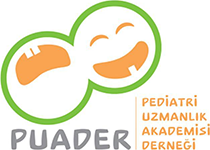An Unusual Etiology of Proteinuria and Hematuria in a Case with IgA Vasculitis Nephropathy: Nutcracker Syndrome
Eren Soyaltın1 , Belde Kasap Demir2
, Belde Kasap Demir2 , Caner Alparslan3
, Caner Alparslan3 , Gülcan Erbaş4
, Gülcan Erbaş4 , Demet Alaygut1
, Demet Alaygut1 , Önder Yavaşcan5
, Önder Yavaşcan5 , Seçil Arslansoyu Çamlar1
, Seçil Arslansoyu Çamlar1 , Fatma Mutlubaş1
, Fatma Mutlubaş1
1University Of Health Sciences Tepecik Training Hospital, Neonatal Intensive Care Unit, İzmir, Türkiye
2University Of Health Sciences Tepecik Training Hospital, Hospital Administration, İzmir, Türkiye
Keywords: Proteinuria, hematuria, Nutcracker syndrome, IgA vasculitis nephritis
Abstract
IgA vasculitis is the most frequent type of vasculitis in children and progresses with the involvement of skin, gastrointestinal system, joints and glomerulonephritis. The most frequent findings of IgAV nephritis are microscopic hematuria and proteinuria ranging from trace amounts to nephrotic levels. The nutcracker syndrome (NCS) is a phenomenon that refers to compression of the left renal vein between the abdominal aorta and superior mesenteric artery. The presenting manifestations are hematuria, orthostatic proteinuria, abdominal pain or left flank pain. Herein we reported a case diagnosed with NCS with regard to persistent microscopic hematuria, intermittent macroscopic hematuria and a fluctuating proteinuria in non-nephrotic levels during the follow up of IgA vasculitis nephritis. A 4,5 year-old boy with rashes extending from the dorsal foot to the sacral regions, arthritis of the ankles and abdominal pain had been admitted to hospital and diagnosed with IgA vasculitis. The total urine analysis revealed +3 proteinuria, and +2 erythrocyte. Nephrotic range of proteinuria was detected in 24-hour urine analysis. The renal biopsy was in accordance with grade II IgA vasculitis nephritis according to the ISKDC classification. The patient was started on an ACE inhibitor and fish oil. In further follow-up, intermittent microscopic hematuria and non-nephrotic range of proteinuria reappeared. The amount of proteinuria was measured in the urine collected during the daytime and the nighttime urine and it was observed that the proteinuria was orthostatic. The patient was re-evaluated regarding etiologies for proteinuria and hematuria. Renal Doppler ultrasonography revealed that the angle between the abdominal aorta and SMA was 14 degrees. Abdominal computed tomography angiography demonstrated that the left renal vein was trapped between aorta and SMA, so the case was diagnosed with NCS. In conclusion, non-glomerular etiologies should be kept in mind in the differential diagnosis of patients with hematuria and/or proteinuria although they are being followed for glomerular pathologies.
Cite this article as: Soyaltin E, Kasap Demir B, Alparslan C, Erbas G, Alaygut D, Yavascan O, et al. An Unusual Etiology of Proteinuria and Hematuria in a Case with IgA Vasculitis Nephropathy: Nutcracker Syndrome. Pediatr Acad Case Rep. 2022;1(1):9-12.
The authors declared no conflicts of interest with respect to authorship and/or publication of the article.
The authors received no financial support for the research and/or publication of this article.

